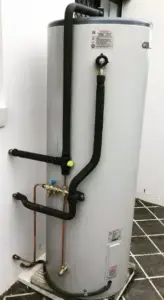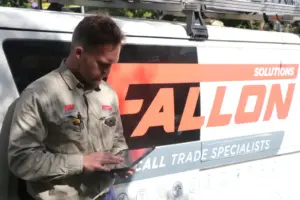How to install a Hot Water System
Installing a new hot water system?
Do you see yourself as a “Jack of All Trades” and consider doing the installation yourself? Unlike building a shelf or fitting a new door, installing a hot water system is far more complex and requires a certain level of experience and specific tools to get the job done correctly. Therefore if you have experience with plumbing, electrical work, and the specific type of hot water system you’re installing, you might be able to handle the installation yourself. One very important aspect before you start the installation process is to check your local building codes and regulations. Once you have successfully installed your system you will need to hire a licensed professional for certain aspects of the installation such as connecting any gas components and valves and electrical connections. Note: if you’re at all unsure or lack the necessary skills, it’s recommended to hire a licensed plumber.

Key points for DIY installation of a hot water system
The specific steps can vary depending on the type of hot water system you’re installing (e.g., tankless, tank-style, solar, heat pump) below is a general overview of the steps involved in installing a tank-style hot water system:
- Choose Location: Select a suitable location for your hot water heater. It should be well-ventilated, have adequate space for maintenance, and be near the plumbing and electrical connections.
- Prepare the Area: Clear the installation area and ensure its level and free from obstructions.
- Install the Tank: For electric heaters: Connect the hot and cold water supply pipes to the heater’s inlet and outlet ports. Use Teflon tape to ensure proper sealing. For gas heaters: Connect the gas line to the heater according to manufacturer instructions. Ensure proper ventilation for safe gas combustion.
- Venting(Gas Heaters): If you’re installing a gas-powered heater, you’ll need to install appropriate venting to carry away exhaust gases. Follow manufacturer guidelines for proper venting installation. You will need a licensed electrician for this task.
- Pressure Relief Valve: Install a pressure relief valve on the hot water outlet to prevent excessive pressure buildup. Connect a discharge pipe to direct any released water to a safe location.
- Water Shut-Off Valve: Install a shut-off valve on the cold water inlet to the heater. This valve will allow you to cut off water flow to the heater for maintenance or repairs.
- Electrical Connection (Electric Heaters): If you’re installing an electric heater, connect the electrical wiring according to manufacturer instructions. Make sure to follow electrical codes and safety precautions. You will need a licensed electrician for this task.
- Fill and Test: Open the cold water supply valve and fill the tank. Check for any leaks around connections and valves. Turn on the power or gas supply and set the thermostat to the desired temperature. Once the water reaches the set temperature, test the hot water at various faucets to ensure proper operation.
- Insulate Pipes (Optional): Consider insulating the hot water pipes to minimize heat loss and improve energy efficiency.
- Final Checks: Double-check all connections, valves, and fittings to ensure they are properly sealed and tightened. Make sure there are no gas leaks (if applicable).
Reasons to have a professional install your hot water system
Having a professional technician might be the better option as they will have the expertise to handle the installation safely and in compliance with regulations, ultimately ensuring a successful and trouble-free installation.
Peace of Mind: Hiring a professional plumber can give you peace of mind that the installation will be done correctly and efficiently. This can save you time and potentially costly mistakes in the long run.
Type of Hot Water System: Some hot water systems, like tankless water heaters or solar water heaters, might require more specialized knowledge for installation. These systems often involve complex plumbing, electrical, or gas work. If you’re not experienced with these aspects, it’s generally a good idea to hire a professional plumber.
Local Regulations: In many jurisdictions, installing a hot water system may require permits and compliance with local building codes and safety regulations. Professional plumbers are often familiar with these regulations and can ensure that the installation meets all legal requirements.
Safety Concerns: Incorrectly installed hot water systems can lead to serious safety issues, such as gas leaks, water leaks, electrical hazards, or improper venting. Plumbers are trained to handle these systems safely and correctly, minimizing the risk of accidents.
Warranty Considerations: Some hot water systems come with warranties that require professional installation to remain valid. Installing the system yourself could void the warranty.
Complexity of Installation: If the installation involves modifying existing plumbing or electrical systems, it’s best to have a professional handle the work. Professionals have the expertise to ensure proper connections, prevent leaks, and avoid damage to your home’s infrastructure.
Hot water system types
- Electric hot water systems – storage and instant
- Gas hot water systems – storage, instant
- Solar hot water – both gas and electric boosted
- Heat pump hot water systems
- Instant hot water systems – indoor or outdoor units
Leading hot water system brands
- Rheem
- AquaMAX
- Bosch
- Rinnai
- Vulcan
- Quantum
- Dux
- Saxon
- Thermann
- Thermasol
- Zip – instant boiling water tap and chilled water tap systems

Professional hot water system supply and installation
For prompt and efficient hot water system installation contact our team at Fallon Solutions on 1300 762 260 or complete our hot water install quote request today.
References – Choice.com.au – Hot Water Systems

